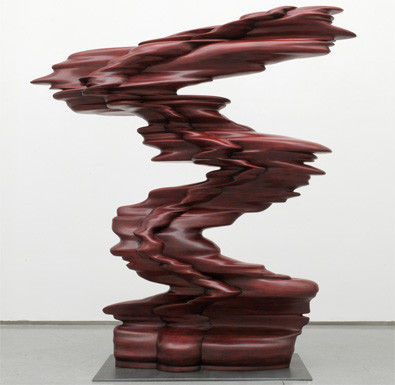The Cosmos of Rudolf Steiner
05 Feb - 22 May 2011

Tony Cragg
Red Figure, 2009
Wood, 233 x 215 x 60 cm
Courtesy of the artist, photo: Charles Duprat
© VG Bild-Kunst, Bonn 2010
Red Figure, 2009
Wood, 233 x 215 x 60 cm
Courtesy of the artist, photo: Charles Duprat
© VG Bild-Kunst, Bonn 2010
THE COSMOS OF RUDOLF STEINER
5 February - 22 May 2011
Rudolf Steiner is one of the most influential and controversial reformers of the 20th century. He founded the anthropological movement, initiated the Waldorf schools, promoted alternative medicine, argued for sustainable farming, designed exceptional pieces of furniture, and coined a building style that anticipates contemporary architecture. Today we find his holistic way of thinking in many areas of society. Apart from this, Steiner (1861-1925) impacted not only artists who were his contemporaries such as Vasily Kandinsky but also those of later generations. For example Joseph Beuys studied Steiner’s writings very thoroughly, and we likewise find references to »the cosmos of Rudolf Steiner« in the work of many recent artists. These contemporary artists do not, however, see themselves as followers of Steiner's teachings; instead their works are rather to be comprehended as reactions to a globalized, highly technological, and specialized world, thereby exhibiting astounding similarities to the reform movement of the previous century. In the large special exhibition »The Cosmos of Rudolf Steiner«, the Kunstmuseum Stuttgart, along with the Kunstmuseum Wolfsburg and the
Vitra Design Museum, is presenting, for the very first time, a comprehensive view of Steiner’s cultural and art-historical impact. Besides historical documents, furniture, films, and architectural models from Steiner’s time, the Kunstmuseum Stuttgart will be showing approaches adopted by 13 contemporary artists, including works by Joseph Beuys, Anish Kapoor, Tony Cragg, Olafur Eliasson, and Katharina Grosse.
Sponsered by the Kulturstiftung des Bundes
5 February - 22 May 2011
Rudolf Steiner is one of the most influential and controversial reformers of the 20th century. He founded the anthropological movement, initiated the Waldorf schools, promoted alternative medicine, argued for sustainable farming, designed exceptional pieces of furniture, and coined a building style that anticipates contemporary architecture. Today we find his holistic way of thinking in many areas of society. Apart from this, Steiner (1861-1925) impacted not only artists who were his contemporaries such as Vasily Kandinsky but also those of later generations. For example Joseph Beuys studied Steiner’s writings very thoroughly, and we likewise find references to »the cosmos of Rudolf Steiner« in the work of many recent artists. These contemporary artists do not, however, see themselves as followers of Steiner's teachings; instead their works are rather to be comprehended as reactions to a globalized, highly technological, and specialized world, thereby exhibiting astounding similarities to the reform movement of the previous century. In the large special exhibition »The Cosmos of Rudolf Steiner«, the Kunstmuseum Stuttgart, along with the Kunstmuseum Wolfsburg and the
Vitra Design Museum, is presenting, for the very first time, a comprehensive view of Steiner’s cultural and art-historical impact. Besides historical documents, furniture, films, and architectural models from Steiner’s time, the Kunstmuseum Stuttgart will be showing approaches adopted by 13 contemporary artists, including works by Joseph Beuys, Anish Kapoor, Tony Cragg, Olafur Eliasson, and Katharina Grosse.
Sponsered by the Kulturstiftung des Bundes
